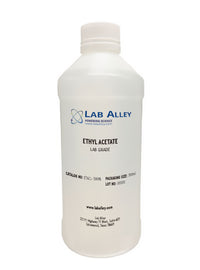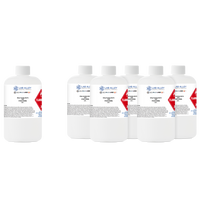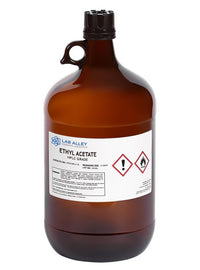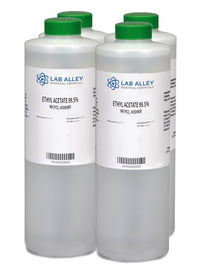Ethyl Acetate
Environmentally Preferred Solvent For Food And Cosmetic Applications
About Ethyl Acetate
Ethyl Acetate is the ester of ethyl alcohol and acetic acid. Its formula is C4H8O2 . Ethyl Acetate is also known as ethyl ester, acetic ether, or acetidin. It is a transparent volatile, flammable liquid with a characteristic fruity odor and a pleasant taste when diluted.

Ethyl acetate is an important chemical product that is used as a solvent for extraction, paints, column chromatography, and as a food additive. It is industrially produced by the slow distillation of ethanol and acetic acid in the presence of sulfuric acid, dimerization with an aluminum alcoholate, and acetic acid addition to ethylene with a heteropoly-acid catalyst.
Ethyl Acetate is miscible with water, alcohols, acetone, chloroform, and ether. t is manufactured on a large scale for use as a solvent.
For cosmetic purposes, ethyl acetate is used as a solvent in nail polish, nail polish removers, basecoats, and other manicuring preparations. It is also a solvent for nitrocellulose, which is the primary film-forming material in nail polish. Ethyl Acetate is a low-boiling solvent that gives the necessary mobility to the polish to enable it to spread easily and dry quickly.
Ethyl Acetate is the most well-known and frequently used organic solvent in chromatography. In addition to the application in the direct synthesis of acetylated amides, another important application of the amine acetylation using ethyl acetate is in the preparation of optically active amines via the kinetic resolution.
For non-cosmetics purposes, ethyl acetate is cited as a direct and indirect food additive, as detailed in the Code of Federal Regulations. Ethyl Acetate is generally considered safe (GRAS) for use as a synthetic flavor and/or adjuvant.
It is also a vital chemical utilized in the decaffeination process of tea and coffee since it is a polar molecule, which makes it a suitable solvent for capturing the polar caffeine molecules from coffee beans.
Ethyl acetate is one of the most used of all chemical flavors by volume and is widely utilized in many industries, including food, pharmaceutical, paint and coating, and cleaning.
Common Uses and Applications
- Hardener for paints
- Adhesive
- Paint and coating additives
- Degreasing solvents
- Processing aids and plasticizers
- Coating formulations for wood furniture
- Laboratory use (chromatography and extractions)
- Ester in wine production
- Cleaning and furnishing care products.
- Solvent for automotive product
- Active ingredient for inks and plastics
- Manufacturing of hair care products and perfumes
- Nail polish remover
- Coffee and tea decaffeination process
Industries
- Food And Beverage
- Paint
- Plastic
- Laboratory
- Liquors
- Cleaning
- Hair Care And Fragrances
- Cosmetics






